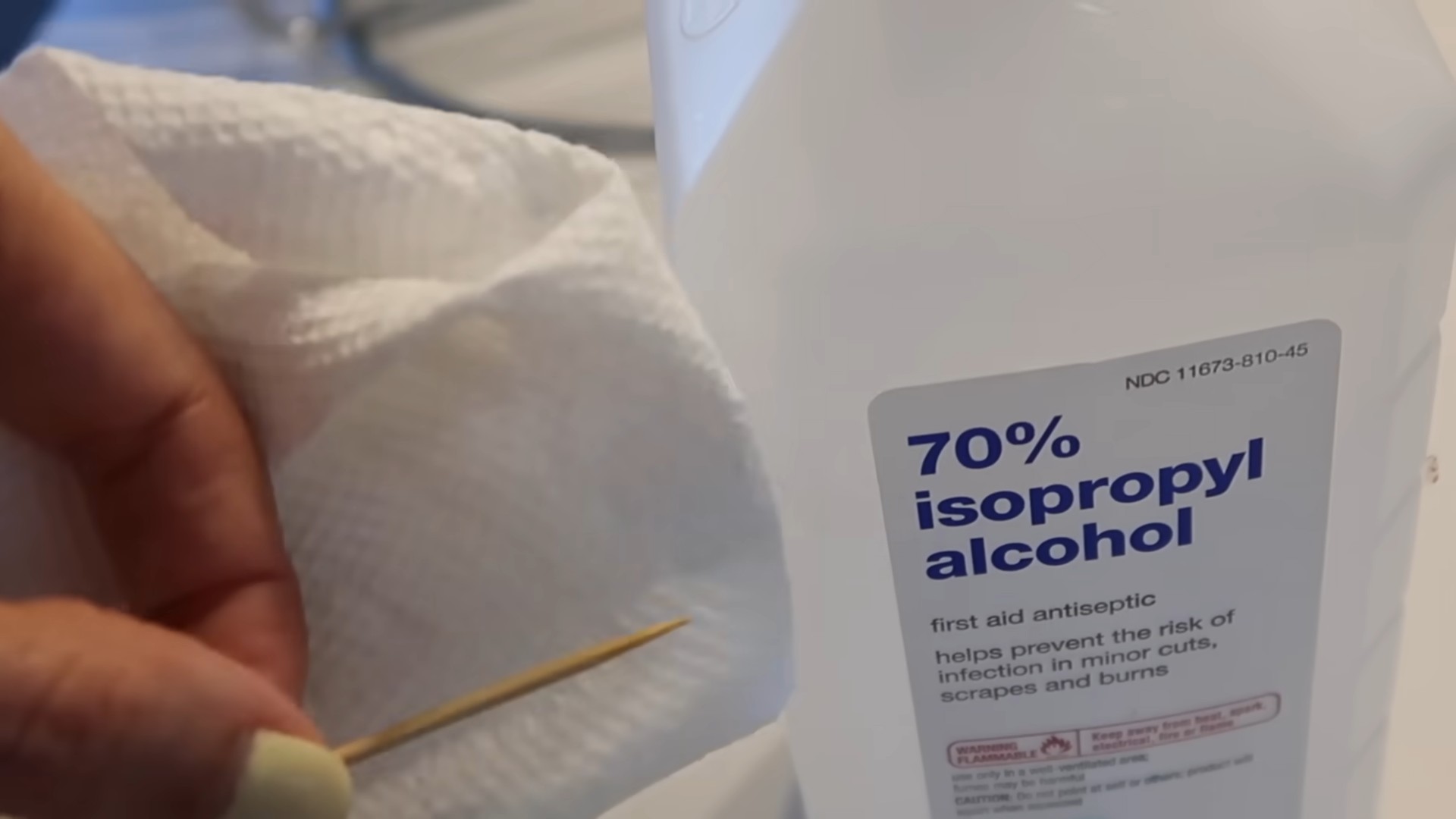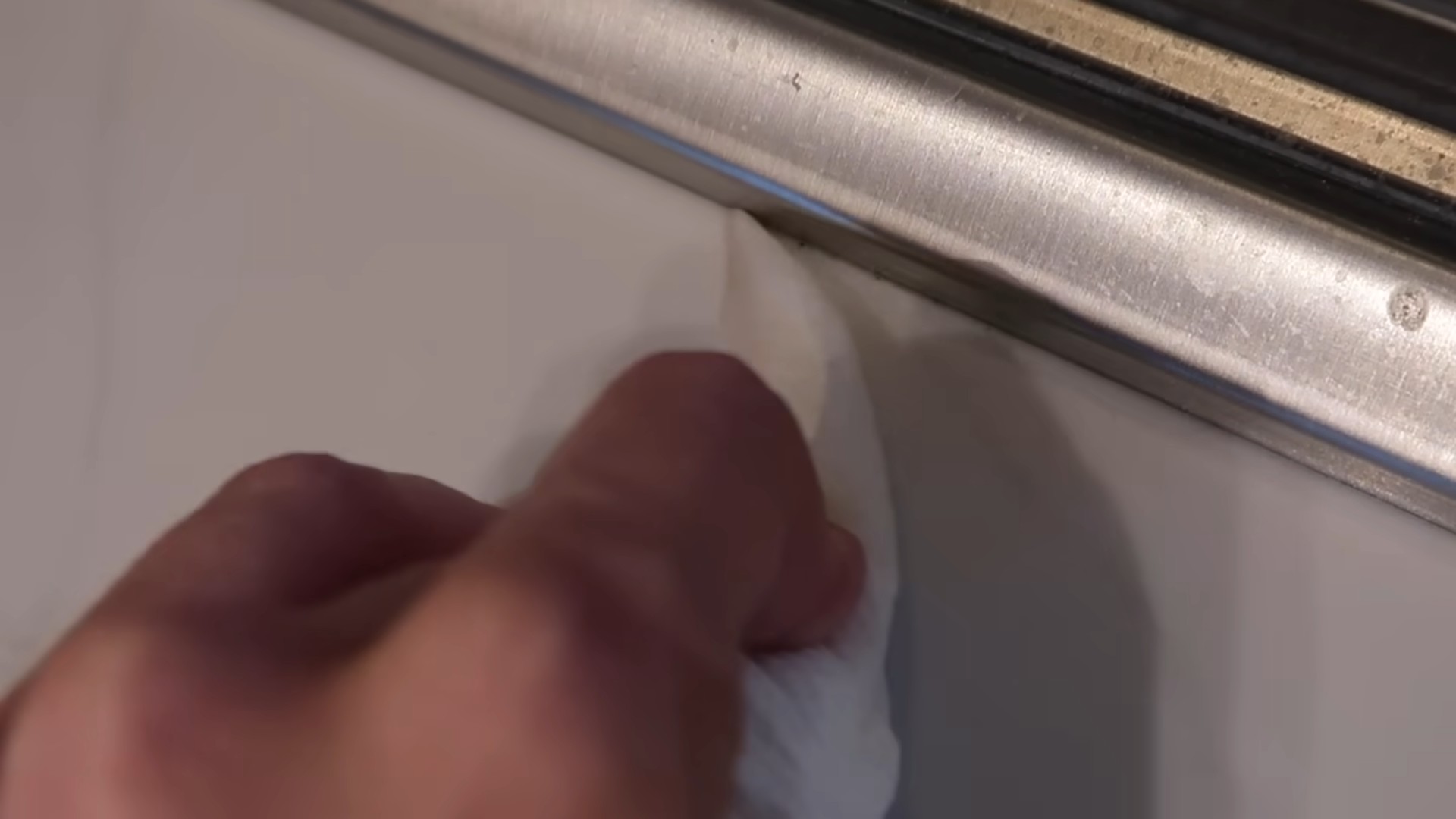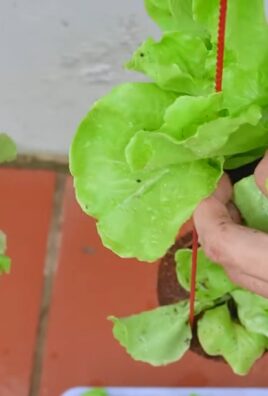Grow Water Spinach Easily, even if you think you don’t have a green thumb! Have you ever dreamt of harvesting fresh, vibrant greens right from your own backyard, adding a delicious and nutritious boost to your meals? Well, dream no more! This DIY guide is your passport to cultivating your very own thriving patch of water spinach, also known as kangkong, without breaking the bank or spending hours toiling away.
Water spinach, a staple in Southeast Asian cuisine, boasts a rich history, gracing tables for centuries with its delicate flavor and impressive nutritional profile. Beyond its culinary appeal, growing your own water spinach offers a fantastic way to connect with nature, reduce your carbon footprint, and ensure a steady supply of fresh, organic produce.
But why should you bother with this particular DIY project? In today’s world, where access to fresh, affordable produce can be a challenge, learning to grow water spinach easily empowers you to take control of your food source. Plus, it’s incredibly rewarding to watch those tiny seeds sprout and flourish into a bountiful harvest. I’m excited to share these simple yet effective tricks and hacks that will have you enjoying homegrown water spinach in no time. Let’s get started!

Growing Water Spinach (Kangkong) at Home: A DIY Guide
Hey there, fellow gardening enthusiasts! I’m so excited to share my experience with growing water spinach, also known as Kangkong, right in my own backyard. It’s surprisingly easy, incredibly rewarding, and you’ll have a constant supply of fresh, delicious greens for stir-fries, soups, and salads. Let’s dive in!
What You’ll Need
Before we get started, let’s gather all the necessary materials. Trust me, having everything ready beforehand will make the whole process much smoother.
* Water Spinach Seeds or Cuttings: You can find seeds online or at your local garden center. Cuttings from mature plants also work great!
* Container or Growing Bed: A large pot, a plastic tub, or even a repurposed container will do. Just make sure it’s at least 12 inches deep. If you’re using a growing bed, ensure it’s in a sunny location.
* Soil: A rich, well-draining soil mix is ideal. I like to use a combination of potting soil, compost, and a little bit of perlite for aeration.
* Water: Water spinach loves water, so make sure you have a reliable source.
* Fertilizer (Optional): A balanced liquid fertilizer can help boost growth, but it’s not strictly necessary.
* Sunlight: Water spinach needs at least 6 hours of sunlight per day.
* Gardening Gloves: To keep your hands clean and protected.
* Trowel or Small Shovel: For planting and transplanting.
* Watering Can or Hose: For watering your plants.
Choosing Your Growing Method
There are two main ways to grow water spinach: from seeds or from cuttings. Both methods are relatively straightforward, so choose whichever one you prefer or have access to.
* Growing from Seeds: This is the most common method and allows you to start from scratch.
* Growing from Cuttings: This is a faster method, as you’re essentially cloning an existing plant.
Growing Water Spinach from Seeds: Step-by-Step
This is my preferred method, as I love watching the tiny seeds sprout and grow into lush plants.
1. Soaking the Seeds: To improve germination rates, soak the water spinach seeds in warm water for 12-24 hours before planting. This helps soften the seed coat and encourages sprouting. I usually put them in a small bowl and leave them overnight.
2. Preparing the Soil: Fill your container or growing bed with the soil mix. Make sure the soil is loose and well-draining. I like to add a layer of compost to the bottom of the container for extra nutrients.
3. Sowing the Seeds: Sow the seeds about 1/2 inch deep and 1-2 inches apart. You can sow them in rows or scatter them evenly across the surface of the soil.
4. Watering: Gently water the soil after sowing the seeds. Keep the soil consistently moist but not waterlogged. I use a watering can with a gentle shower setting to avoid disturbing the seeds.
5. Providing Sunlight: Place the container or growing bed in a sunny location where it will receive at least 6 hours of sunlight per day.
6. Germination: Water spinach seeds typically germinate within 5-10 days. Keep the soil moist during this time.
7. Thinning (Optional): Once the seedlings have emerged and have a few true leaves, you can thin them out if they are too crowded. This will give the remaining plants more space to grow. I usually thin them to about 4-6 inches apart.
8. Watering Regularly: Water spinach needs plenty of water, especially during hot weather. Water deeply whenever the top inch of soil feels dry to the touch. I usually water my plants every day or every other day, depending on the weather.
9. Fertilizing (Optional): If you want to boost growth, you can fertilize your water spinach plants every 2-3 weeks with a balanced liquid fertilizer. Follow the instructions on the fertilizer label.
10. Harvesting: You can start harvesting water spinach about 4-6 weeks after planting. Simply cut the stems about 6 inches above the soil level. The plants will regrow, allowing you to harvest multiple times. I love harvesting regularly to encourage bushier growth.
Growing Water Spinach from Cuttings: Step-by-Step
This method is perfect if you already have access to mature water spinach plants.
1. Selecting Cuttings: Choose healthy, vigorous stems from a mature water spinach plant. The cuttings should be about 6-8 inches long and have several nodes (the points where leaves emerge).
2. Preparing the Cuttings: Remove the leaves from the bottom 2-3 inches of the cuttings. This will encourage root growth.
3. Rooting the Cuttings (Method 1: Water): Place the cuttings in a glass or jar of water, making sure that the bottom nodes are submerged. Change the water every 1-2 days. Roots should start to appear within a week or two.
4. Rooting the Cuttings (Method 2: Soil): Dip the cut end of the cutting in rooting hormone (optional) and plant directly into moist soil. Keep the soil consistently moist.
5. Planting the Cuttings: Once the cuttings have developed roots (either in water or directly in soil), you can plant them in your container or growing bed. Space the cuttings about 4-6 inches apart.
6. Watering: Water the cuttings thoroughly after planting. Keep the soil consistently moist but not waterlogged.
7. Providing Sunlight: Place the container or growing bed in a sunny location where it will receive at least 6 hours of sunlight per day.
8. Watering Regularly: Water spinach needs plenty of water, especially during hot weather. Water deeply whenever the top inch of soil feels dry to the touch.
9. Fertilizing (Optional): If you want to boost growth, you can fertilize your water spinach plants every 2-3 weeks with a balanced liquid fertilizer. Follow the instructions on the fertilizer label.
10. Harvesting: You can start harvesting water spinach about 3-4 weeks after planting the cuttings. Simply cut the stems about 6 inches above the soil level. The plants will regrow, allowing you to harvest multiple times.
Maintaining Your Water Spinach Plants
Once your water spinach plants are established, here are a few tips to keep them thriving:
* Watering: Consistent watering is crucial. Water spinach loves moist soil, so check the soil moisture regularly and water accordingly.
* Fertilizing: Regular fertilization will help promote healthy growth and abundant harvests. Use a balanced liquid fertilizer every 2-3 weeks.
* Weeding: Keep the growing area free of weeds, as they can compete with your water spinach plants for nutrients and water.
* Pest Control: Water spinach is generally pest-resistant, but keep an eye out for aphids, spider mites, and other common garden pests. If you spot any pests, you can treat them with insecticidal soap or neem oil.
* Pruning: Regular pruning will encourage bushier growth and prevent the plants from becoming too leggy. Simply pinch off the tips of the stems to promote branching.
Harvesting and Using Your Water Spinach
Harvesting is the most rewarding part of growing water spinach!
* When to Harvest: You can start harvesting when the stems are about 10-12 inches long.
* How to Harvest: Use scissors or a sharp knife to cut the stems about 6 inches above the soil level.
* Storage: Freshly harvested water spinach can be stored in the refrigerator for up to a week. Wrap it in a damp paper towel and place it in a plastic bag.
* Culinary Uses: Water spinach is a versatile vegetable that can be used in a variety of dishes. It’s delicious in stir-fries, soups, salads, and even as a side dish. Some of my favorite recipes include garlic water spinach, water spinach with fermented bean curd, and water spinach soup.
Troubleshooting Common Problems
Even with the best care, you might encounter a few challenges along the way. Here are some common problems and how to address them:
* Yellowing Leaves: This could be a sign of nutrient deficiency. Try fertilizing your plants with a balanced liquid fertilizer.
* Slow Growth: This could be due to insufficient sunlight or water. Make sure your plants are getting at least 6 hours of sunlight per day and that the soil is consistently moist.
* Pest Infestation: If you spot any pests, treat them with insecticidal soap or neem oil.
* Leggy Growth: This could be due to insufficient sunlight or overcrowding. Make sure your plants are getting enough sunlight and

Conclusion
So, there you have it! Growing your own water spinach, or kangkong, is not only surprisingly simple, but also incredibly rewarding. Forget those wilted, overpriced bunches at the grocery store. With this easy DIY trick, you can have a constant supply of fresh, crisp, and vibrant water spinach right at your fingertips.
Why is this a must-try? Because it’s faster, cheaper, and fresher than buying it. You control the growing environment, ensuring your water spinach is free from harmful pesticides and packed with nutrients. Plus, there’s something deeply satisfying about harvesting your own food, connecting you to the natural world in a tangible way.
But the fun doesn’t stop there! Feel free to experiment with different growing mediums. While we’ve focused on a simple water-based system, you can also try growing your water spinach in a container filled with nutrient-rich soil. Just ensure the soil remains consistently moist. Another variation is to add a small amount of liquid fertilizer to the water every couple of weeks to boost growth, especially if you notice the leaves are looking pale. You can also try different varieties of water spinach. Some are more heat-tolerant than others, so research which varieties thrive best in your local climate.
Don’t be afraid to get creative with your setup! Repurpose old containers, build a small hydroponic system, or even dedicate a corner of your garden to this versatile vegetable. The possibilities are endless.
We wholeheartedly encourage you to give this DIY trick a try. It’s a fantastic way to introduce fresh, healthy greens into your diet, reduce your grocery bill, and connect with nature. And most importantly, it’s a fun and engaging project for the whole family.
Once you’ve harvested your first batch of homegrown water spinach, we’d love to hear about your experience! Share your photos, tips, and variations in the comments below. Let’s build a community of water spinach enthusiasts and inspire others to embrace the joy of growing their own food. Let us know if you found this method to grow water spinach easily. Happy growing!
Frequently Asked Questions (FAQ)
What exactly is water spinach, and why should I grow it?
Water spinach, also known as kangkong, ong choy, or swamp cabbage, is a leafy green vegetable popular in Southeast Asian cuisine. It’s packed with vitamins and minerals, including vitamin A, vitamin C, iron, and calcium. Growing your own water spinach ensures you have a fresh, readily available supply of this nutritious vegetable, free from pesticides and at a fraction of the cost of buying it from the store. Plus, it’s incredibly easy to grow, even for beginners!
How long does it take to grow water spinach from cuttings?
One of the best things about water spinach is its rapid growth rate. You can typically expect to see significant growth within just a few days of placing the cuttings in water. Harvestable leaves can usually be ready in as little as two to three weeks, depending on the growing conditions. Warmer temperatures and plenty of sunlight will accelerate the growth process.
What kind of water should I use to grow water spinach?
Tap water is generally fine for growing water spinach, but it’s best to let it sit out for 24 hours to allow any chlorine to dissipate. You can also use filtered water or rainwater. Avoid using water that is heavily chlorinated or contains high levels of minerals, as this can inhibit growth. Regularly change the water every few days to prevent algae growth and ensure the water spinach has access to fresh nutrients.
How much sunlight does water spinach need?
Water spinach thrives in full sun, meaning it needs at least six hours of direct sunlight per day. If you’re growing it indoors, place it near a sunny window or supplement with a grow light. Insufficient sunlight can result in leggy growth and smaller leaves.
Can I grow water spinach indoors during the winter?
Yes, you can absolutely grow water spinach indoors during the winter, especially if you live in a colder climate. Provide it with plenty of light, either from a sunny window or a grow light, and maintain a consistent temperature. You may need to adjust your watering schedule depending on the humidity levels in your home.
What are some common problems when growing water spinach, and how can I fix them?
Some common problems include yellowing leaves, slow growth, and algae growth in the water. Yellowing leaves can indicate a nutrient deficiency, so try adding a small amount of liquid fertilizer to the water. Slow growth can be caused by insufficient sunlight or cool temperatures. Ensure your water spinach is getting enough light and warmth. Algae growth can be prevented by regularly changing the water and keeping the container clean.
How do I harvest water spinach?
Harvesting water spinach is easy! Simply cut the stems a few inches above the water line. The plant will continue to grow and produce new shoots, allowing you to harvest multiple times. It’s best to harvest in the morning when the leaves are at their freshest.
What are some ways to use water spinach in cooking?
Water spinach is a versatile vegetable that can be used in a variety of dishes. It’s commonly stir-fried with garlic and chili, added to soups and stews, or used in salads. It has a mild, slightly sweet flavor that pairs well with many different ingredients.
Is water spinach safe to eat?
Yes, water spinach is generally safe to eat when grown in clean water and free from pesticides. However, it’s important to thoroughly wash the leaves before cooking to remove any dirt or debris. If you’re unsure about the water quality, it’s best to cook the water spinach thoroughly before eating it.
Can I grow water spinach from seeds instead of cuttings?
Yes, you can grow water spinach from seeds. Soak the seeds in water for 24 hours before planting them in moist soil. Keep the soil consistently moist and provide plenty of sunlight. However, growing from cuttings is generally faster and easier, as the cuttings readily root in water.
What kind of fertilizer should I use for water spinach?
A balanced liquid fertilizer, such as a 20-20-20 formula, is suitable for water spinach. Dilute the fertilizer according to the package instructions and add a small amount to the water every couple of weeks. Avoid over-fertilizing, as this can burn the roots.
How do I prevent pests from attacking my water spinach?
Water spinach is generally resistant to pests, but aphids and spider mites can sometimes be a problem. Regularly inspect your plants for signs of infestation and treat them with insecticidal soap or neem oil if necessary. Keeping the growing environment clean and well-ventilated can also help prevent pest problems.
Can I grow water spinach in a hydroponic system?
Yes, water spinach is well-suited for hydroponic systems. The roots readily absorb nutrients from the water, and the plant grows quickly in a hydroponic environment. You can use a variety of hydroponic systems, such as deep water culture or nutrient film technique.
What is the best time of year to grow water spinach?
Water spinach thrives in warm weather, so the best time to grow it is during the spring and summer months. It can tolerate high temperatures, but it is sensitive to frost. If you live in a colder climate, you can start growing water spinach indoors in the early spring and transplant it outdoors once the weather warms up.
How do I store harvested water spinach?
Store harvested water spinach in the refrigerator in a plastic bag or container. It will stay fresh for several days. It’s best to use it as soon as possible for the best flavor and texture.




Leave a Comment